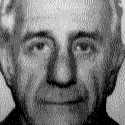
1913 - 1993
Aladena James Fratianno
Summary
Name:
Nickname:
Jimmy the WeaselYears Active:
1937 - 1977Birth:
November 14, 1913Status:
DeceasedClass:
MurdererVictims:
5Method:
Strangulation / ShootingDeath:
June 29, 1993Nationality:
USA
1913 - 1993
Aladena James Fratianno
Summary: Murderer
Name:
Aladena James FratiannoNickname:
Jimmy the WeaselStatus:
DeceasedVictims:
5Method:
Strangulation / ShootingNationality:
USABirth:
November 14, 1913Death:
June 29, 1993Years Active:
1937 - 1977bio
Aladena Fratianno was born on November 14, 1913, in Naples, Italy. His family migrated to the United States when he was a child, settling in Cleveland, Ohio. Fratianno grew up in a working-class, immigrant neighborhood—specifically in the Little Italy section of the city. Early on, he became entangled in petty street crime and was first arrested at the age of 19, though he was not charged. His first major conviction came in 1937 for robbery, landing him a seven-year sentence in an Ohio state prison. It was during his youth that he acquired the nickname "Jimmy the Weasel," allegedly shouted by a bystander as he fled from police.
Following his parole in 1945, Fratianno relocated to Los Angeles, where he quickly made connections in the West Coast underworld, including the infamous gangster Mickey Cohen. His reputation as a calculating and effective enforcer grew over time, solidifying his place within the Los Angeles crime family. He married Jean, a woman he met in an airport, in 1975. Despite multiple arrests and stints in prison throughout the 1950s and 1960s, Fratianno continued to ascend within the mob hierarchy.
His influence expanded beyond the U.S. through dealings with Australian organized crime figures and international drug smuggling ventures tied to unions and transportation companies. By the mid-1970s, he was tapped to serve as co-acting boss of the L.A. family while its head, Dominic Brooklier, served time in prison.
murder story
Jimmy Fratianno admitted to participating in five murders during his criminal career, though suspicions of involvement in more linger. His first known murder occurred in 1949, when he and Joseph Dippolito strangled Frank Niccoli, a bodyguard to Mickey Cohen, under the orders of Jack Dragna. The following years saw a pattern of mob-sanctioned hits executed by Fratianno with brutal efficiency. In 1951, alongside Frank Bompensiero, he murdered Frank Borgia over extortion disputes. That same year, on August 6, Fratianno arranged and participated in the killings of Anthony Brancato and Anthony Trombino—two rogue mobsters operating without family approval.
His final known kill came in 1953, when he lured Louis Strauss to Los Angeles under false pretenses and strangled him. The murders reflected a combination of loyalty to mob superiors, strategic eliminations, and strict adherence to Mafia codes. Despite his deadly record, Fratianno was known to have deep loyalty to select members, such as Bompensiero—refusing to participate in a hit ordered against him.
By 1977, internal tensions within the L.A. family boiled over. After a falling out with boss Dominic Brooklier—who suspected Fratianno of trying to operate independently—Fratianno feared for his life. Things escalated when Ray Ferritto was arrested for the murder of Irish mob boss Danny Greene. Ferritto, under threat from his own associates, turned state's witness and implicated Fratianno in the bombing plot. Facing indictment and betrayal, Fratianno flipped.
He pleaded guilty to several charges and received a five-year sentence, serving only 21 months. In 1980, he entered the Witness Protection Program, providing testimony that helped convict high-level Mafia members across the country. He claimed that the Mafia had placed a $100,000 bounty on his head. He later published two books and was eventually expelled from the program after costing the U.S. government nearly $1 million in protection expenses.
On June 29, 1993, Fratianno died from natural causes in Oklahoma City. He had reportedly been suffering from Alzheimer’s and had experienced multiple strokes.